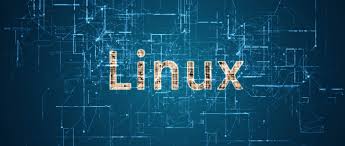个人笔记,不保证正确。
一、关系构建:ForeignKey 与 relationship {#一关系构建foreignkey-与-relationship}
关系构建的重点,在于搞清楚这两个函数的用法。ForeignKey 的用法已经在SQL表达式语言 - 表定义中的约束 讲过了。主要是 ondelete 和 onupdate 两个参数的用法。
二、relationship {#二relationship}
relationship 函数在 ORM 中用于构建表之间的关联关系。与 ForeignKey 不同的是,它定义的关系不属于表定义,而是动态计算的。用它定义出来的属性,相当于 SQL 中的视图。
这个函数有点难用,一是因为它的有几个参数不太好理解,二是因为它的参数非常丰富,让人望而却步。下面通过一对多 、多对一 、多对多 几个场景下 relationship 的使用,来一步步熟悉它的用法。
首先初始化:
|-----------|----------------------------------------------------------------------------------------------------------------------------------------------------------------------------------------------------|
| 1 2 3 4 5 | python3 from sqlalchemy import Table, Column, Integer, ForeignKey from sqlalchemy.orm import relationship from sqlalchemy.ext.declarative import declarative_base Base = declarative_base() |
1. 一对多 {#1-一对多}
|-------------------------|--------------------------------------------------------------------------------------------------------------------------------------------------------------------------------------------------------------------------------------------------------------------------------------------------------------------------------------------------------|
| 1 2 3 4 5 6 7 8 9 10 11 | python3 class Parent(Base): __tablename__ = 'parent' id = Column(Integer, primary_key=True) # 因为 Child 中有 Parent 的 ForeignKey,这边的声明不需要再额外指定什么。 children = relationship("Child") # children 的集合,相当于一个视图。 class Child(Base): __tablename__ = 'child' id = Column(Integer, primary_key=True) parent_id = Column(Integer, ForeignKey('parent.id')) |
一个 Parent 可以有多个 Children,通过 relationship,我们就能直接通过parent.children 得到结果,免去繁琐的 query 语句。
1.1 反向引用 {#11-反向引用}
1.1.1 backref 与 back_populates {#111-backref-与-back_populates}
那如果我们需要得知 child 的 parent 对象呢?能不能直接访问 child.parent?
为了实现这个功能,SQLAlchemy 提供了 backref 和 back_populates 两个参数。
两个参数的效果完全一致,区别在于,backref 只需要在 Parent 类中声明children,Child.parent 会被动态创建。
而 back_populates 必须在两个类中显式地使用 back_populates,更显繁琐。(但是也更清晰?)
先看 backref 版:
|---------------|--------------------------------------------------------------------------------------------------------------------------------------------------------------------------------------------------------------------|
| 1 2 3 4 5 6 7 | python3 class Parent(Base): __tablename__ = 'parent' id = Column(Integer, primary_key=True) children = relationship("Child", backref="parent") # backref 表示,在 Child 类中动态创建 parent 属性,指向当前类。 # Child 类不需要修改 |
再看 back_populates 版:
|----------------------------|----------------------------------------------------------------------------------------------------------------------------------------------------------------------------------------------------------------------------------------------------------------------------------------------------------------------------------------------------------------------------------------------------------------------|
| 1 2 3 4 5 6 7 8 9 10 11 12 | python3 class Parent(Base): __tablename__ = 'parent' id = Column(Integer, primary_key=True) children = relationship("Child", back_populates="parent") # back_populates class Child(Base): __tablename__ = 'child' id = Column(Integer, primary_key=True) parent_id = Column(Integer, ForeignKey('parent.id')) # 这边也必须声明,不能省略! parent = relationship("Parent", back_populates="children") # parent 不是集合,是属性! |
NOTE:声明的两个 relationship 不需要多余的说明,SQLAlchemy 能自动识别到parent.children 是 collection,child.parent 是 attribute.
1.1.2. 反向引用的参数:sqlalchemy.orm.backref(name, **kwargs) {#112-反向引用的参数sqlalchemyormbackrefname-kwargs}
使用 back_populates 时,我们可以很方便地在两个 relationship 函数中指定各种参数:
|----------------------------|----------------------------------------------------------------------------------------------------------------------------------------------------------------------------------------------------------------------------------------------------------------------------------------------------------------------------------------------------------------------------------------------------------------------------|
| 1 2 3 4 5 6 7 8 9 10 11 12 | python3 class Parent(Base): __tablename__ = 'parent' id = Column(Integer, primary_key=True) children = relationship("Child", back_populates="parent", lazy='dynamic') # 指定 lazy 的值 class Child(Base): __tablename__ = 'child' id = Column(Integer, primary_key=True) parent_id = Column(Integer, ForeignKey('parent.id')) parent = relationship("Parent", back_populates="children", lazy='dynamic') # 指定 lazy 的值 |
但是如果使用 backref,因为我们只有一个 relationship 函数,Child.parent 是被隐式创建的,我们该如何指定这个属性的参数呢?
答案就是 backref() 函数,使用它替代 backref 参数的值:
|-------------------|---------------------------------------------------------------------------------------------------------------------------------------------------------------------------------------------------------------------------------------------------------------------------|
| 1 2 3 4 5 6 7 8 9 | python3 from sqlalchemy.orm import backref class Parent(Base): __tablename__ = 'parent' id = Column(Integer, primary_key=True) children = relationship("Child", backref=backref("parent", lazy='dynamic')) # 使用 backref() 函数,指定 Child.parent 属性的参数 # Child 类不需要修改 |
backref() 的参数会被传递给 relationship(),因此它俩的参数也完全一致。
2. 多对一 {#2-多对一}
A many-to-one is similar to a one-to-many relationship. The difference is that this relationship is looked at from the "many" side.
3. 一对一 {#3-一对一}
|----------------------------------|---------------------------------------------------------------------------------------------------------------------------------------------------------------------------------------------------------------------------------------------------------------------------------------------------------------------------------------------------------------------------------------------------------------------------------------------------------|
| 1 2 3 4 5 6 7 8 9 10 11 12 13 14 | python3 class Parent(Base): __tablename__ = 'parent' id = Column(Integer, primary_key=True) child = relationship("Child", uselist=False, # 不使用 collection!这是关键 back_populates="parent") class Child(Base): __tablename__ = 'child' id = Column(Integer, primary_key=True) parent_id = Column(Integer, ForeignKey('parent.id')) # 包含 ForeignKey 的类,此属性默认为 attribute,因此不需要 uselist=False parent = relationship("Parent", back_populates="child") |
4. 多对多 {#4-多对多}
|-------------------------------------|----------------------------------------------------------------------------------------------------------------------------------------------------------------------------------------------------------------------------------------------------------------------------------------------------------------------------------------------------------------------------------------------------------------------------------------------------------------------------------------------------|
| 1 2 3 4 5 6 7 8 9 10 11 12 13 14 15 | python # 多对多,必须要使用一个关联表! association_table = Table('association', Base.metadata, Column('left_id', Integer, ForeignKey('left.id')), # 约定俗成的规矩,左边是 parent Column('right_id', Integer, ForeignKey('right.id')) # 右边是 child ) class Parent(Base): __tablename__ = 'left' id = Column(Integer, primary_key=True) children = relationship("Child", secondary=association_table) # 专用参数 secondary,用于指定使用的关联表 class Child(Base): __tablename__ = 'right' id = Column(Integer, primary_key=True) |
要添加反向引用时,同样可以使用 backref 或 back_populates.
4.1 user2user {#41-user2user}
如果多对多关系中的两边都是 user,即都是同一个表时,该怎么声明?
例如用户的「关注」与「粉丝」,你是 user,你的粉丝是 user,你关注的账号也是 user。
这个时候,关联表 association_table 的两个键都是 user,SQLAlchemy 无法区分主次,需要手动指定 ,为此需要使用 primaryjoin 和 secondaryjoin 两个参数。
|----------------------------------------------------|-----------------------------------------------------------------------------------------------------------------------------------------------------------------------------------------------------------------------------------------------------------------------------------------------------------------------------------------------------------------------------------------------------------------------------------------------------------------------------------------------------------------------------------------------------------------------------------------------------------------------------------------------------------------------------------------------------------------------------------------------------------------------------------------------------------------------------------------------------------------------------------------------|
| 1 2 3 4 5 6 7 8 9 10 11 12 13 14 15 16 17 18 19 20 | python # 关联表,左侧的 user 正在关注右侧的 user followers = db.Table('followers', db.Column('follower_id', db.Integer, db.ForeignKey('user.id')), # 左侧 db.Column('followed_id', db.Integer, db.ForeignKey('user.id')) # 右侧,被关注的 user ) class User(UserMixin, db.Model): id = db.Column(db.Integer, primary_key=True) username = db.Column(db.String(64), index=True, unique=True, nullable=False) email = db.Column(db.String(120), index=True, unique=True, nullable=False) password_hash = db.Column(db.String(128), nullable=False) # 我关注的 users followed = db.relationship( 'User', secondary=followers, # 指定多对多关联表 primaryjoin=(followers.c.follower_id == id), # 左侧,用于获取「我关注的 users」的 join 条件 secondaryjoin=(followers.c.followed_id == id), # 右侧,用于获取「我的粉丝」的 join 条件 lazy='dynamic', # 延迟求值,这样才能用 filter_by 等过滤函数 backref=db.backref('followers', lazy='dynamic')) # followers 也要延迟求值 |
这里比较绕的,就是容易搞混 primaryjoin 和 secondaryjoin 两个参数。
- primaryjoin:(多对多中)用于从子对象查询其父对象的 condition(child.parents),默认只考虑外键。
- secondaryjoin:(多对多中)用于从父对象查询其所有子对象的condition(parent.children), 同样的,默认情况下只考虑外键。
三、ORM 层 的 "delete" cascade vs. FOREIGN KEY 层的 "ON DELETE" cascade {#三orm-层-的-delete-cascade-vs-foreign-key-层的-on-delete-cascade}
之前有讲过 Table 定义中的级联操作:ON DELETE 和 ON UPDATE,可以通过 ForeignKey 的参数指定为 CASCADE.
可 SQLAlchemy 还有一个 relationship 生成 SQL 语句时的配置参数 cascade,另外passive_deletes 也可以指定为 cascade。
有这么多的 cascade,我真的是很懵。这三个 cascade 到底有何差别呢?
外键约束中的 ON DELETE 和 ON UPDATE,与 ORM 层的 CASCADE 在功能上,确实有很多重叠的地方。但是也有很多不同:
- 数据库层面的
ON DELETE级联能高效地处理 many-to-one 的关联;我们在many方定义外键,也在这里添加ON DELETE约束。而在 ORM 层,就刚好相反 。SQLAlchemy 在one方处理many方的删除操作,这意味着它更适合处理 one-to-many 的关联。 - 数据库层面上,不带
ON DELETE的外键常用于防止父数据被删除,而导致子数据成为无法被索引到的垃圾数据。如果要在一个 one-to-many 映射上实现这个行为,SQLAlchemy 将外键设置为 NULL 的默认行为可以通过以下两种方式之一捕获:- 最简单也最常用的方法,当然是将外键定义为 NOT NULL. 尝试将该列设为 NULL 会触发 NOT NULL constraint exception.
- 另一种更特殊的方法,是将
passive_deletes标志设置为字all. 这会完全禁用 SQLAlchemy 将外键列设置为 NULL 的行为,并且 DELETE 父数据而不会对子数据产生任何影响。这样才能触发数据库层面的ON DELETE约束,或者其他的触发器。 - 数据库层面的
ON DELETE级联 比 ORM 层面的级联更高效。数据库可以同时在多个 relationship 中链接一系列级联操作。 - SQLAlchemy 不需要这么复杂,因为我们通过将 passive_deletes 选项与正确配置的外键约束结合使用,提供与数据库的
ON DELETE功能的平滑集成。
方法一:ORM 层的 cascade 实现 {#方法一orm-层的-cascade-实现}
relationship 的 cascade 参数决定了修改父表时,什么时候子表要进行级联操作。它的可选项有 (str,选项之间用逗号分隔):
save-update:默认选项之一。在 add(对应 SQL 的 insert 或 update)一个对象的时候,会 add 所有它相关联的对象。merge:默认选项之一。在 merge(相当字典的update操作,有就替换掉,没有就合并)一个对象的时候,会 merge 所有和它相关联的对象。expunge:移除操作的时候,会将相关联的对象也进行移除。这个操作只是从session中移除,并不会真正的从数据库中删除。delete:删除父表数据时,同时删除与它关联的数据。delete-orphan:当子对象与父对象解除关系时,删除掉此子对象(孤儿)。(其实还是没懂。。)refresh-expire:不常用。all:表示选中除delete-orphan之外的所有选项。(因此all, delete-orphan很常用, 它才是真正的all)
默认属性是 "save-update, merge".
这只是简略的说明,上述几个参数的详细文档见SQLAlchemy - Cascades
方法二:数据库层的 cascade 实现 {#方法二数据库层的-cascade-实现}
- 将
ForeignKey的ondelete和onupdate参数指定为CASCADE,实现数据库层面的级联。 - 为
relationship添加关键字参数passive_deletes="all",这样就完全禁用 SQLAlchemy 将外键列设置为 NULL 的行为,并且 DELETE 父数据不会对子数据产生任何影响。
这样 DELETE 操作时,就会触发数据库的 ON DELETE 约束,从而级联删除子数据。
 51工具盒子
51工具盒子



